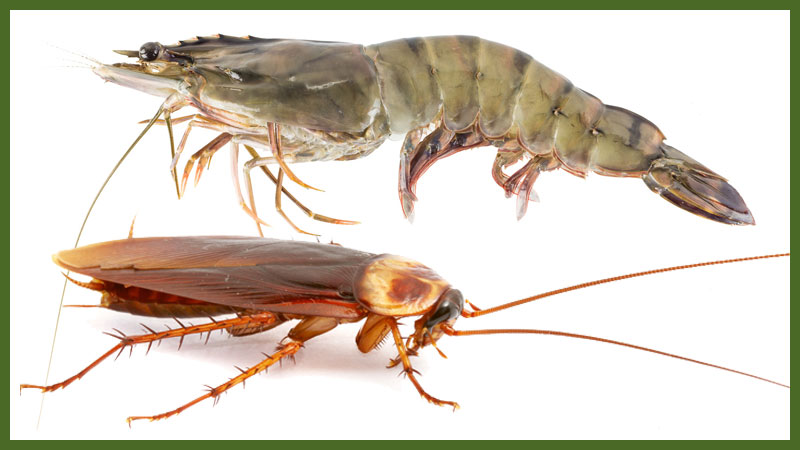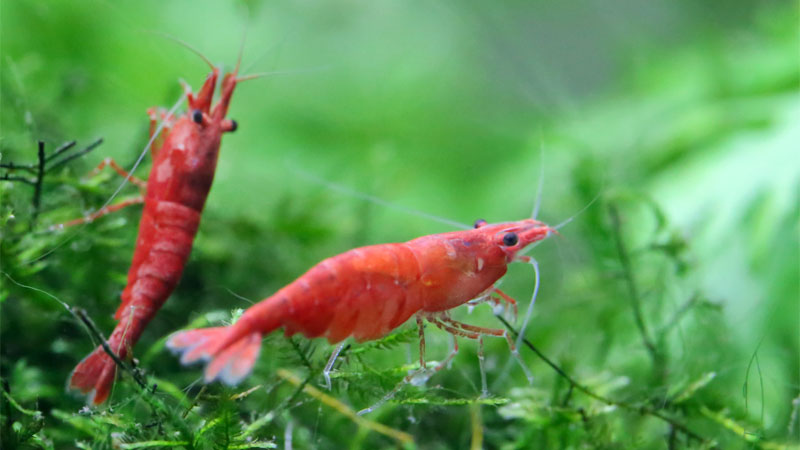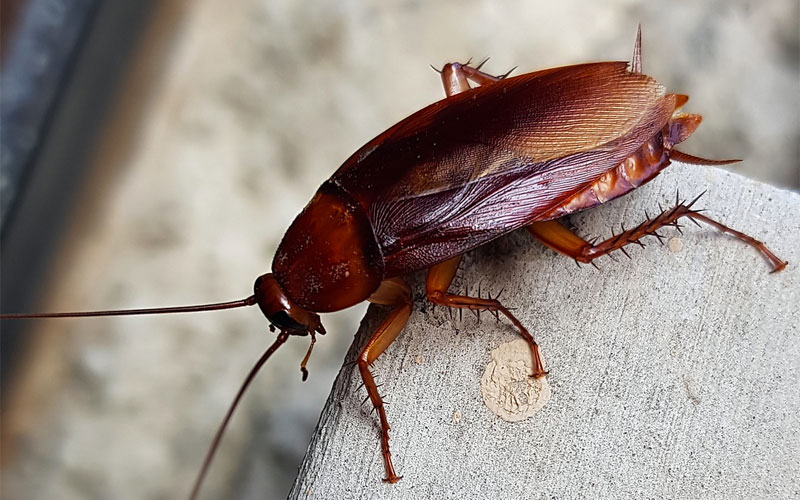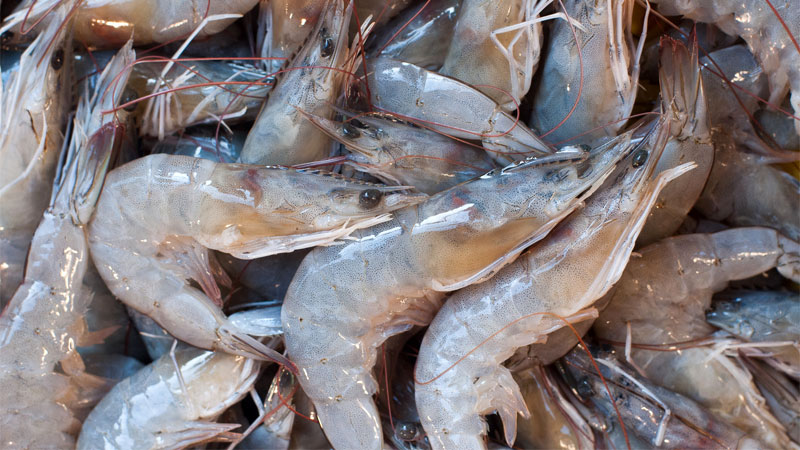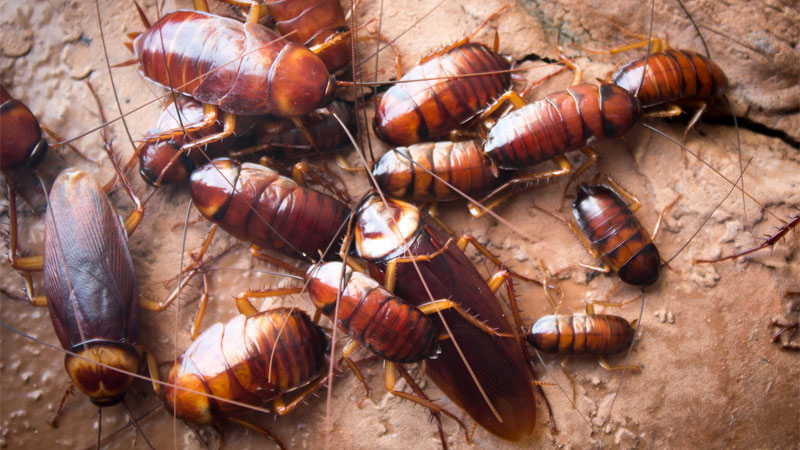Science has a very complicated way of classifying things. They will often group things together based upon physical similarities, only to later separate them based on minor differences.
Even more confusing is the fact that there are multiple classification systems which can place a plant or animal on completely different locations on the evolutionary tree than other systems.
Today we’re going to go a little off the beaten path and explore a surprisingly common question in the pest world that arose in part because of how things are classified. So be sure to finish any food you’re eating before going further, because we’re about to ask the surprising question…
Are shrimp and cockroaches actually related?
- Despite popular belief, cockroaches and shrimp are so distantly related that they may as well not be related at all.
- Shrimp are often described as resembling insects but bear very little in common, including the number of legs.
- The origin of this question may be based on a nickname for shrimp: "cockroach of the sea". The nickname is likely be based on the scavenging habits of many species.
- Other than this possible connection, there is very little in common between shrimp and cockroaches.
Facts About Shrimp
There are a LOT of different species of shrimp out there, many of which look nothing like the shrimp in your cocktail.
To keep things simple, we’re only going to talk about the “true shrimp” (Infraorder Caridea), which are the ones you’re likely to find at a supermarket or on a menu. However, much of the information here will also apply to other critters commonly referred to as shrimp.
Appearance
If you’ve never seen a shrimp before, this is one of the places where you might think they’re an insect if one was poorly described to you.
Shrimp technically have a head, thorax, and abdomen. However, the head and thorax are fused together into what’s known as a cephalothorax. A protective carapace covers the two parts, which can further give the appearance that the head and thorax are a single part.
The abdomen is a many-segmented part that resembles a tail and can be best compared to that of another close relative, the lobster. Shrimp have a pair of antennae, much like insects. But this is where the real comparisons end.
It’s a common myth that shrimp have six legs. However, they’re decapods, meaning “ten feet” and sometimes the front legs are modified into large or long-armed claws much like lobsters or crabs while other times they’re smaller than the legs and only long enough to get food into their mouths.
In terms of size, shrimp can vary from being a fraction of an inch to as long as 13 inches long – a record held by female tiger shrimp (Penaeus monodon).
Shrimp are cosmopolitan, meaning they can be found everywhere in the world except Antarctica, albeit on the ocean floor rather than land. Their appearance and coloration tend to vary based upon the threats and food availability of their individual habitats.
Classification
There are more than 2,000 species of shrimp out there. Classification for these critters can be very complicated, as there are all sorts of random crustaceans known as shrimp throughout the animal kingdom.
All shrimp fit within the following portion of the classification tree:
- Kingdom: Animalia
- Phylum: Arthropoda
- Clade: Pancrustacea
- Subphylum: Crustacea
True shrimp have the further classification of:
- Class: Malacostraca
- Order: Decapoda
- Suborder: Pleocyemata
- Infraorder: Caridea
It should be noted that prawns (suborder Dendrobranchiata) are closely related to true shrimp and the two names are often used interchangeably.
However, while they’re certainly included in this little comparison to the extent that they’re often called shrimp, we don’t want to muddy the waters by introducing critters based solely on nicknames.
Diet
Shrimp are technically omnivores, but their diet from one species to another can vary greatly. For example, many shrimp are filter feeders, meaning their legs have special bristles known as setae which catch food particles from the water as the shrimp moves.
Other shrimp are cleaners. These shrimp will do a dance to entice fish over, then pick away dead scales or necrotic tissue, cleaning the fish and getting a meal in exchange.
Aquarium owners often employ ghost shrimp (Palaemonetes spp.), which are some of the many shrimp that pick out debris from the seabed or scrape algae from rocks.
Finally, there are some predator species, such as the pistol shrimp (family Alpheidae), which have asymmetrical claws they can use to make a loud snapping sound. This underwater “gunshot” stuns nearby prey, allowing the shrimp to strike.
Habitat
Shrimp are aquatic critters that can be found in both fresh and salt water bodies worldwide. They’re often found in reefs and other environments where they can easily hide.
Facts About Cockroaches
Cockroaches are some of the most feared and hated insects in the world. While only a few species actually infest homes, they make up a large percentage of pest control product sales every year.
Appearance
Cockroaches tend to have a similarly oval body shape, with some being more elongate than others. As with all insects, they have a three-part body (head, thorax, and abdomen), a pair of antennae, and six legs. They can range in size from a fraction of an inch to nearly four inches long.
Coloration is usually shades of brown to black, with some reddish hues, and some species also have markings. For example, the domino cockroach (Therea petiveriana) is black with six white dots along its back.
See Also: 15 Bugs That Look Like Cockroaches
Classification
There are approximately 4,600 species of cockroach, although only 30 are known to be home invaders. They all belong to a single order:
- Kingdom: Animalia
- Phylum: Arthropoda
- Class: Insecta
- Superorder: Dictyoptera
- Order: Blattodea
Of the many species of roaches, those in the US will likely only have major problems from a handful, such as: the American cockroach (Periplaneta americana), Florida woods cockroach (Eurycotis floridana), German cockroach (Blattella germanica), and Oriental cockroach (Blatta orientalis).
However, there is another…
Diet
Cockroaches are often omnivorous and are known as one of Nature’s great waste disposal units. For example, the American cockroach is well-adapted to eating just about anything organic, from skin flakes and old glue to paper, textiles, dead insects, and fruit. They’ll even join flies in breaking down dead animals.
However, many other cockroaches are adapted primarily for digesting crystallized cellulose in wood. In all but a few cases, this ability to live off of wood is actually due to the symbiotic bacteria genus Blattabacterium that infest the guts of all but one recently discovered genus of cockroach.
Habitat
Cockroaches are cosmopolitan (meaning they can be found all over the world except for Antarctica). Most species are nocturnal and tend to flee from light.
Depending on their primary food source, they’ll often be found living in fallen or decaying logs, hiding under rocks, or even invading homes (sometimes even inside your dishwasher or refrigerator).
They prefer warm, dark, and damp environments with easy access from food and minimal animal activity.
Read Also: 25 Different Roaches Found in Florida
Shrimp vs Cockroaches
So now that we’ve had a look at these two groups of critters in detail, let’s begin comparing notes. We’re looking not only at whether the two species are related in terms of classification, but also in terms of appearance, behavior, and other factors.
Similarities
#1 – Arthropods
Both shrimp and cockroaches are arthropods. This means they have strong exoskeletons and multiple pairs of legs. They both have antennae and their segmented bodies technically contain a head, thorax, and abdomen.
#2 – Scavengers
While not true of all shrimp species, many are scavengers, gathering up all sorts of organic debris and acting as living waste disposal units. Likewise, many species of cockroach will scavenge all sorts of organic matter to feed on.
Additionally, both of these critters have species that are more specialized for specific food sources, such as wood or dead scales. In fact, many of their common characteristics are related to their feeding habits.
#3 – Very Agile
The two species can be incredibly agile when threatened, with cockroaches skittering for the nearest dark crevasse and shrimp using their tails to jet backwards with surprising grace.
#4 – Can Cause Allergic Reactions
Both shrimp and cockroaches can cause severe allergic reactions. Those with a sensitization to cockroach poop are often reacting to contaminants carried by the cockroaches themselves. They may also react after contact with contaminated food or surfaces. In rare cases, roaches even bite.
Meanwhile, individuals with shrimp sensitization (and/or to other crustaceans) most often react by ingestion. A shrimp allergy is no joke and the consumption of shrimp could easily end with you spending your vacation as a patient in the emergency room. As with roaches, food that came in contact with the shrimp can still cause a reaction if you have a more severe clinical food allergy.
Luckily, allergic reactions to cockroaches tend to be a bit more mild, depending on the magnitude of cockroach sensitization or secondary problems such as asthma.
#5 – Edible
While it’s true that many species of both cockroaches and shrimp are edible, very few cultures consume cockroaches while shrimp are popular in most cultures. However, both are technically good sources of protein and very low in carbs – if you’re ever desperate enough to eat a roach, at least you won’t starve.
#6 – Can Be Kept as Pets
Curiously enough, both shrimp and cockroaches an be kept as pets. The Madagascar hissing cockroach (Gromphadorhina portentosa) is often kept as an exotic pet. They don’t like light and can climb glass, so they’re usually kept in aquariums with a screen lid and petroleum jelly smeared around the upper inch or two of the walls to prevent escape.
Likewise, shrimp are popular among fish enthusiasts, with several species being kept in home aquariums. The most common of these is perhaps the aforementioned ghost shrimp, which serves as an aquarium cleaner and can coexist with a wide range of fish and other aquatic critters.
#7 – Often Confused With Other Species
Last but not least, both shrimp and cockroaches are often confused with other species. Cockroaches are frequently confused with a wide range of beetles due to their anatomical similarities.
In the case of shrimp, prawns are commonly confused, and some shrimp are mistaken for lobsters or crabs.
Differences
#1 – Body
While people often claim that shrimp have six legs, they’re actually decapods with 10 legs (with the forelegs modified into grasping claws) while cockroaches are hexapods with six pairs of walking legs.
Likewise, while shrimp technically have head and thorax, the two are fused into a cephalothorax.
#2 – Environment
Shrimp are marine creatures, with most species living in the shallow waters of coral reefs and shorelines, with some being found in deeper waters. Freshwater shrimp can also be found.
Cockroaches are purely land creatures, although some species can swim. Trying to put the two into the same environment will result in one or the other perishing, depending on what that environment is.
#3 – Nuisance Factor
Another huge difference is that shrimp aren’t pests. They won’t climb up through your open moonpool to scavenge your deep-sea pantry for rations from the surface world.
Unfortunately, roaches won’t be as respectful of terrestrial homes as shrimp are of sea bases. Once they get into your home, they’ll contaminate any food they come in contact with and can be a pain to get rid of.
#4 – Light
And speaking of getting rid of critters, cockroaches hate light (the exception being the Asian cockroach (Blattella asahinai), which is nocturnal but attracted to lights and shiny surfaces. They’re also quite afraid of humans and will do everything in their power to get away.
Meanwhile, shrimp are much less bothered by light sources and can be raised in aquariums. They’re generally not threatened by divers and will go about their business unless they feel threatened.
#5 – Social Structure
Finally, social structure is an absolutely massive difference between shrimp and cockroaches. Shrimp tend to be somewhat solitary, although you may find several hanging out in a relatively small space. They do, however, brood their eggs instead of releasing them directly into the water as many other aquatic critters do.
This is in stark contrast to cockroaches, which often have a very complex social structure. In some species, female cockroaches are known to nurture their young and retain parental roles within the colony. They communicate with each other using a variety of pheromones and seeing one pretty much guarantees there are more nearby.
#6 – Similarities in the Family Tree
When comparing these two critters, it’s also a good idea to examine how diverse they are within their own kind. For example, even though shrimp and cockroaches are hardy creatures, they’ve adapted in very different ways from one species to another.
Comparing Shrimp
The similarities between shrimp are surprisingly few. All shrimp are aquatic creatures. Their jointed limbs are adapted to their particular eating habits. Shrimp vary greatly in size, with a mantis shrimp positively dwarfing a ghost shrimp. Also, saltwater shrimp can have some crazy appearances, with some having adapted to resemble coral or developing other forms of camouflage.
Not all shrimp are suitable for the table, and the more edible ones are often raised in coastal farming ponds. Conversely, their diet ranges from plankton and plant matter all the way up to dead aquatic animal species and even human bodies after a ship sinking.
All in all, the huge variations in appearance, diet, and even behavioral traits means it’s no wonder they’re often confused with other aquatic life.
Comparing Cockroaches
Meanwhile, there are far more similarities between cockroach species. Their rigid exoskeletons are oval, and there’s far less size variation. Cockroaches also have shorter lifespans, with most species living only one or two years. All cockroaches prefer dry land and can drown.
Some species can handle more extreme temperatures than others, but they all have the same proverbial boiling point. More cold-adapted members of the cockroach family tree simply retain a little more functionality than more tropical species.
Of course, while some cockroaches will feed on dead animals, others have a cellulose-based diet. And that’s where the matter of termites comes into play. Termites are very different looking than other wood roaches, which is why they were considered their own type of critter until genetic testing proved otherwise.
- How to Get Rid of Hawks - March 8, 2024
- How to Get Rid of Pill Bugs (Rolly Pollies) - March 1, 2024
- How to Get Rid of Groundhogs (Woodchucks) - February 5, 2024

